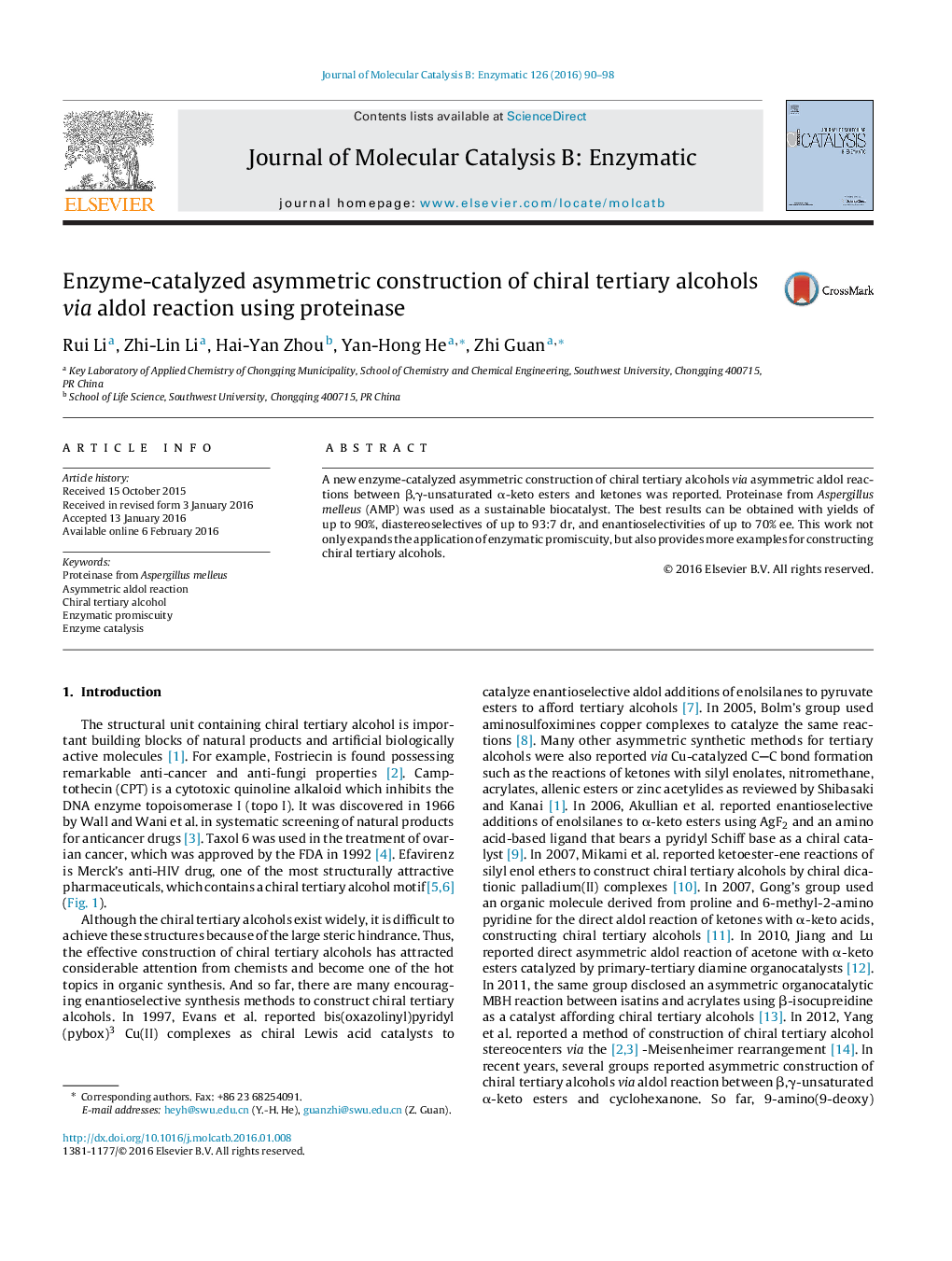| Article ID | Journal | Published Year | Pages | File Type |
|---|---|---|---|---|
| 69338 | Journal of Molecular Catalysis B: Enzymatic | 2016 | 9 Pages |
•Chiral tertiary alcohols were obtained via asymmetric ketone–ketone aldol reaction.•Proteinase from Aspergillus melleus (AMP) was used as a sustainable biocatalyst.•Enzymatic promiscuity was used to construct chiral tertiary alcohols.•This work expands the application of natural enzyme in organic synthesis.
A new enzyme-catalyzed asymmetric construction of chiral tertiary alcohols via asymmetric aldol reactions between β,γ-unsaturated α-keto esters and ketones was reported. Proteinase from Aspergillus melleus (AMP) was used as a sustainable biocatalyst. The best results can be obtained with yields of up to 90%, diastereoselectives of up to 93:7 dr, and enantioselectivities of up to 70% ee. This work not only expands the application of enzymatic promiscuity, but also provides more examples for constructing chiral tertiary alcohols.
Graphical abstractFigure optionsDownload full-size imageDownload as PowerPoint slideChiral tertiary alcohol was obtained via asymmetric ketone–ketone aldol reaction using proteinase from Aspergillus melleus (AMP) as a sustainable biocatalyst.
